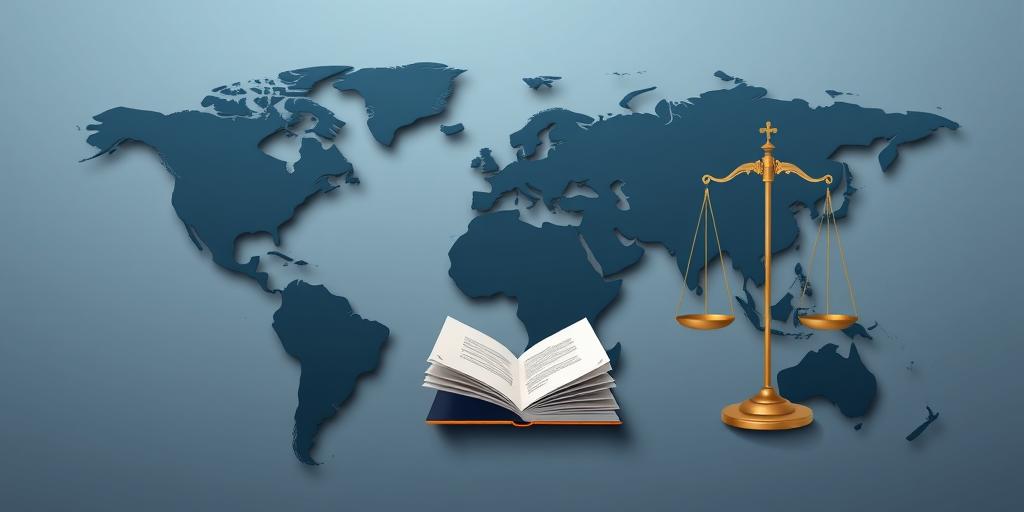International treaties are formal agreements between countries or international organizations that are binding under international law. They play a crucial role in governing various aspects of international relations, from trade and human rights to environmental protection and security. Understanding how these treaties are made and enforced is essential for anyone interested in global affairs.
The Making of International Treaties
The process of creating an international treaty typically involves several stages:
Negotiation: The first step is negotiation, where representatives from the involved parties come together to discuss the terms of the agreement. This can occur through diplomatic channels, international conferences, or within the framework of international organizations like the United Nations. Negotiation may take months or even years, depending on the complexity and sensitivity of the issues involved.
Adoption: Once the parties reach a consensus on the treaty text, it is formally adopted. Adoption usually requires a vote, and the specific voting rules may vary depending on the forum in which the treaty is being negotiated. For example, within the UN General Assembly, a simple majority is often sufficient.
Signature: After adoption, the treaty is opened for signature. Signing the treaty indicates a state's intention to become a party to the treaty. However, signature alone does not create a binding legal obligation. It primarily signifies good faith and an intention to proceed with ratification.
Ratification: Ratification is the process by which a state formally consents to be bound by a treaty. This typically involves approval by the state's legislative body (e.g., parliament or congress) and the deposit of an instrument of ratification with the designated depositary (often the UN Secretary-General). The exact requirements for ratification vary according to each state's domestic laws.
Entry into Force: A treaty enters into force when a specified number of states have ratified it. The treaty itself will stipulate the number of ratifications required and the date on which it comes into effect. For multilateral treaties, this can take considerable time, as many states may need to ratify the agreement before it becomes operational.
Enforcement of International Treaties
Enforcing international treaties can be challenging because there is no global police force or court with compulsory jurisdiction over all states. However, several mechanisms exist to promote compliance:
Monitoring and Reporting: Many treaties establish monitoring mechanisms, such as committees or expert bodies, to oversee their implementation. States are often required to submit periodic reports on their compliance with the treaty's provisions. These reports are reviewed by the monitoring body, which may issue recommendations or identify areas where further action is needed.
Diplomatic Pressure: Diplomatic pressure, including persuasion, negotiation, and sometimes sanctions, can be used to encourage states to comply with their treaty obligations. Other states or international organizations may exert pressure on a non-complying state to bring it into compliance.
International Courts and Tribunals: Some treaties provide for dispute resolution through international courts and tribunals, such as the International Court of Justice (ICJ) or specialized tribunals for trade or human rights. However, states must consent to the jurisdiction of these bodies for them to hear a case. If a state violates a treaty and has accepted the court's jurisdiction, it may be subject to binding rulings and orders.
Sanctions: In some cases, sanctions may be imposed on states that violate international treaties. These can include economic sanctions, such as trade restrictions or asset freezes, or political sanctions, such as diplomatic isolation. Sanctions are usually imposed by the UN Security Council or by individual states or groups of states.
Retaliation and Countermeasures: Under international law, a state that is injured by another state's violation of a treaty may take countermeasures, which are actions that would otherwise be illegal but are justified as a response to the violation. Countermeasures must be proportionate to the injury suffered and must be aimed at inducing the violating state to comply with its obligations.
Conclusion
International treaties are a cornerstone of international law and diplomacy. The process of making and enforcing these treaties involves complex negotiations, legal procedures, and political considerations. While enforcement can be challenging, various mechanisms exist to promote compliance and resolve disputes. Understanding these processes is crucial for navigating the complex landscape of international relations and ensuring that treaties serve their intended purpose of promoting cooperation and maintaining peace and security among nations.









